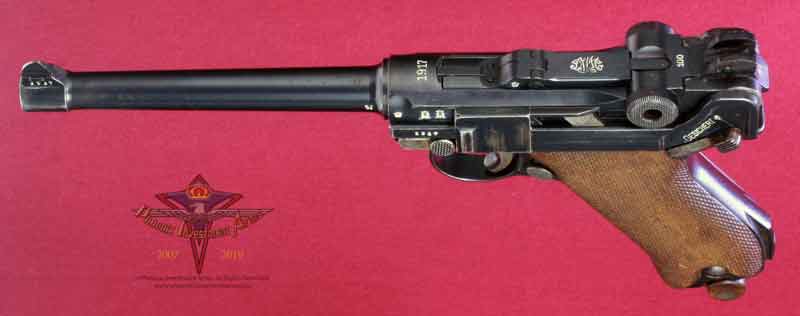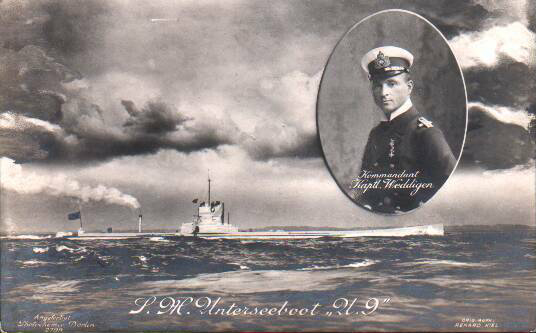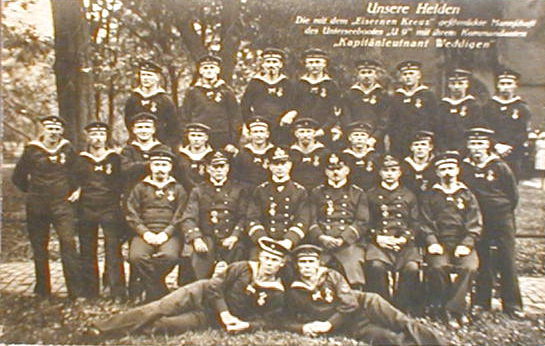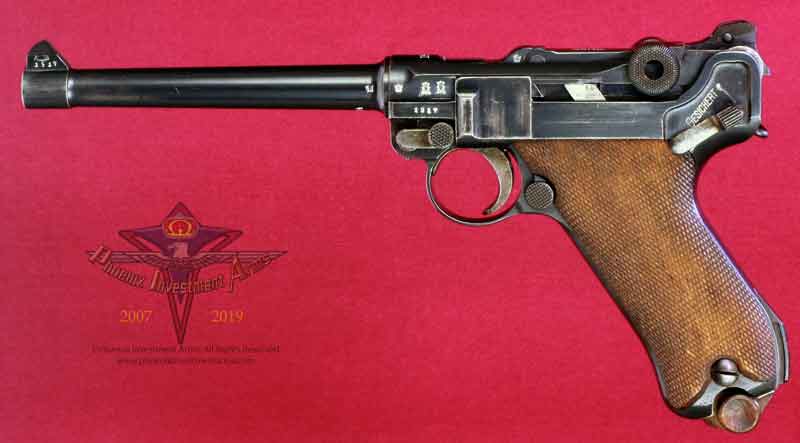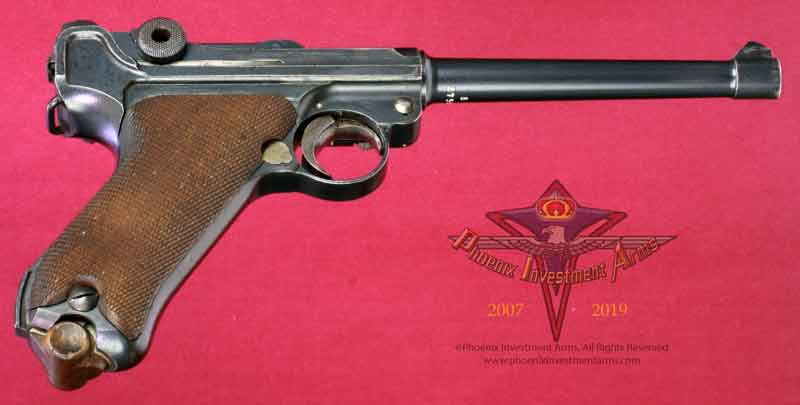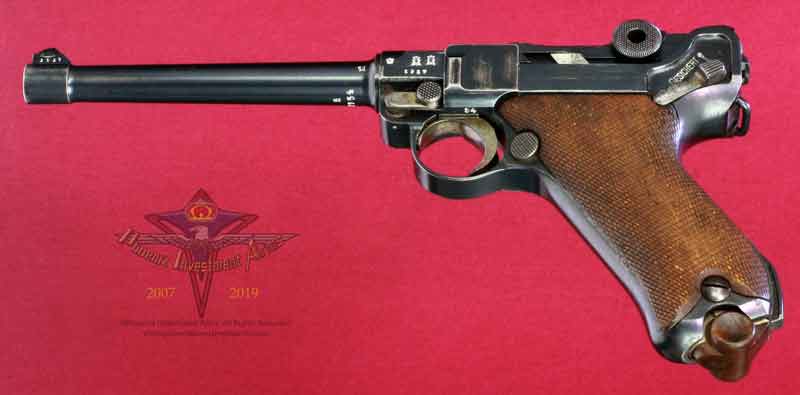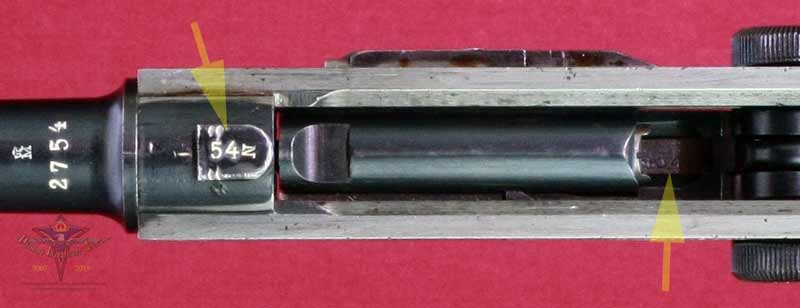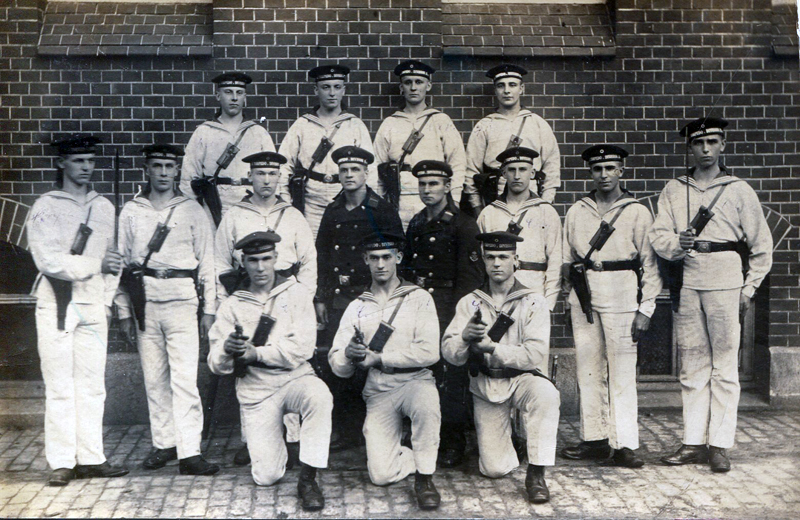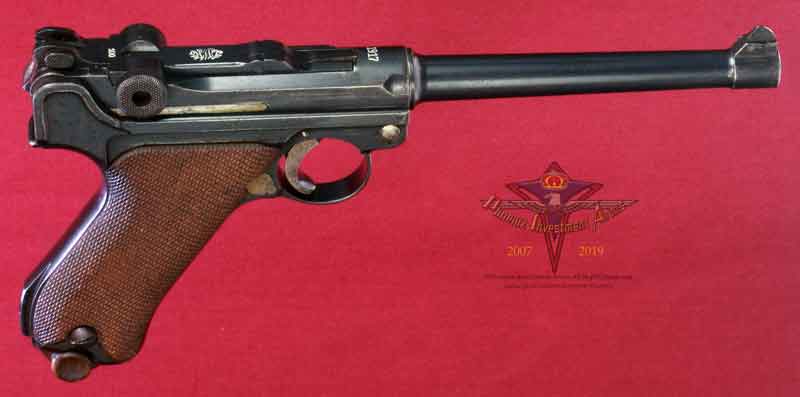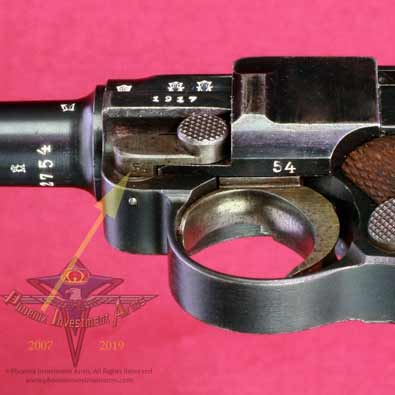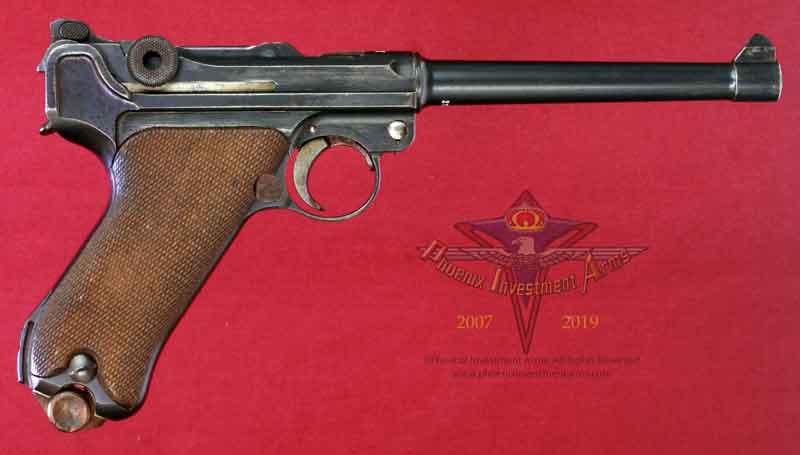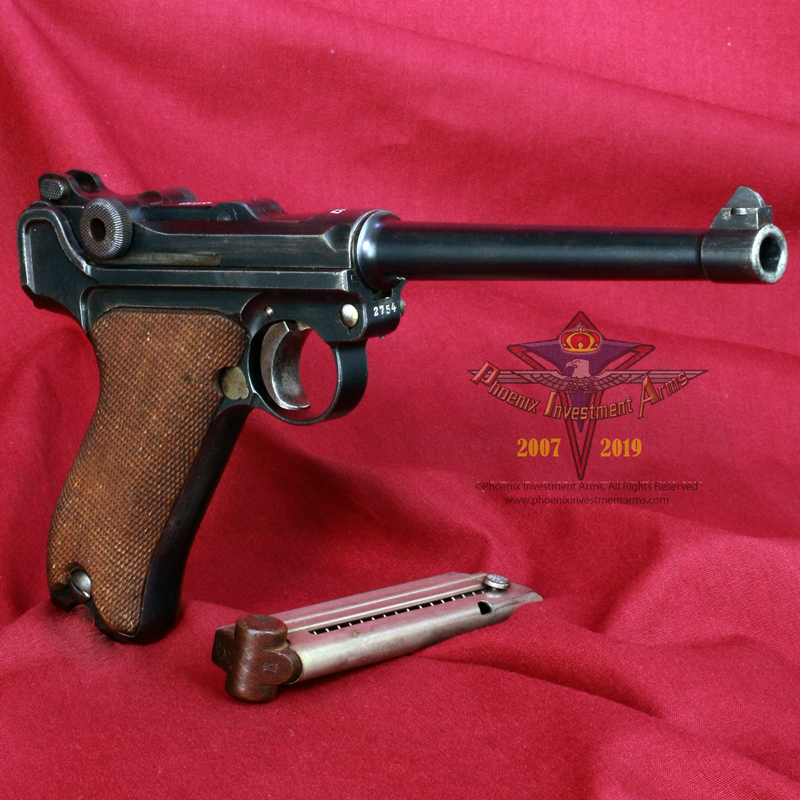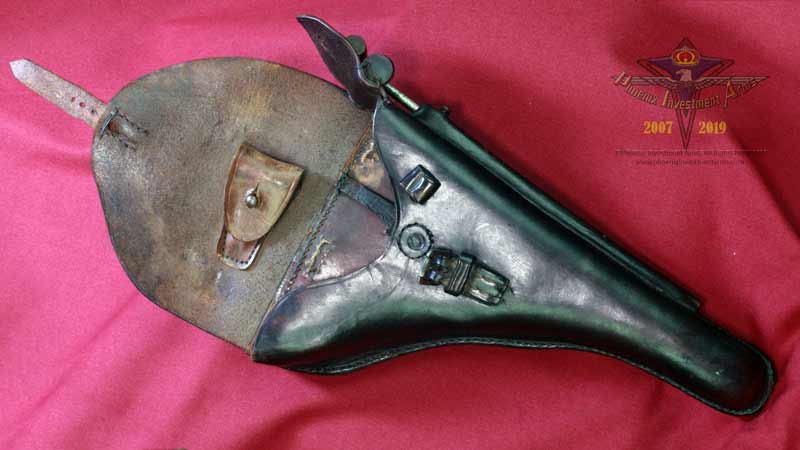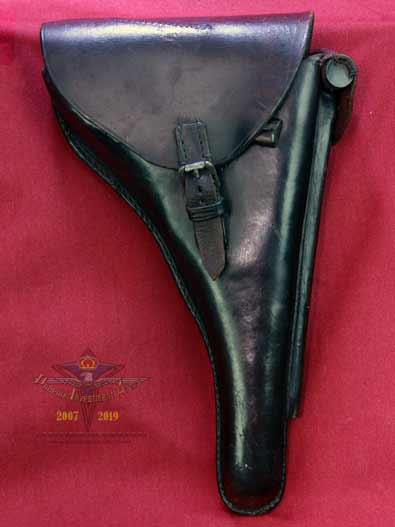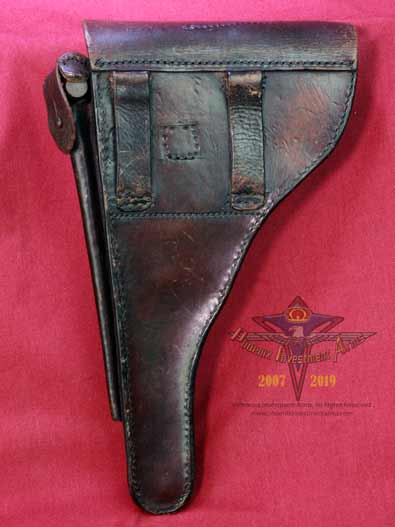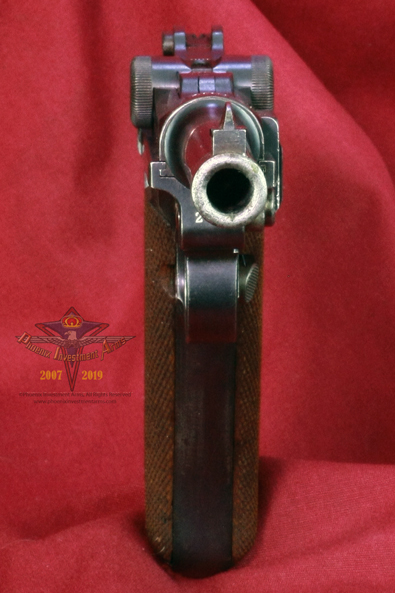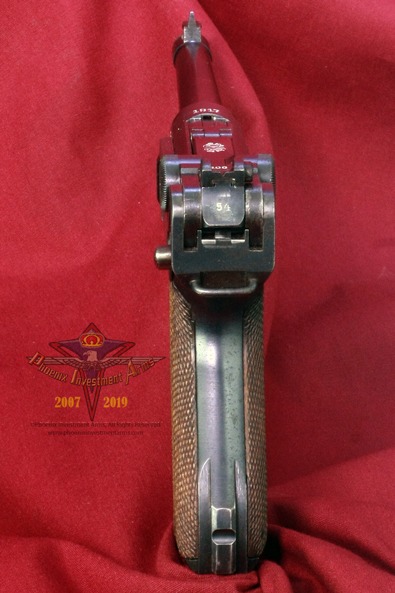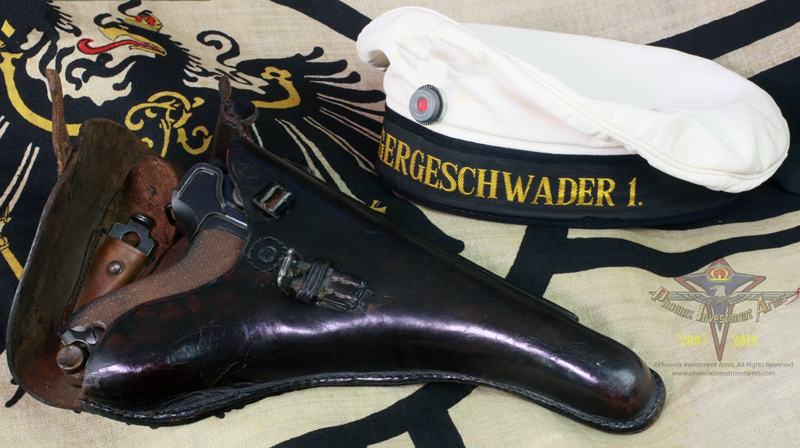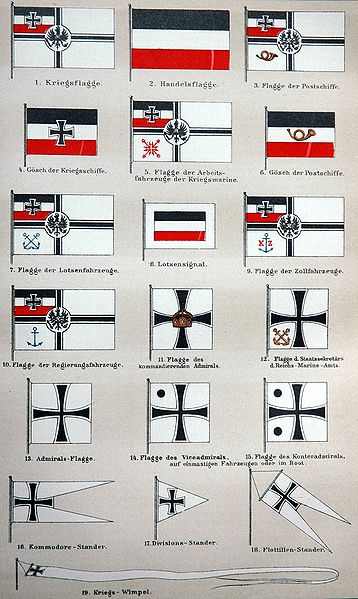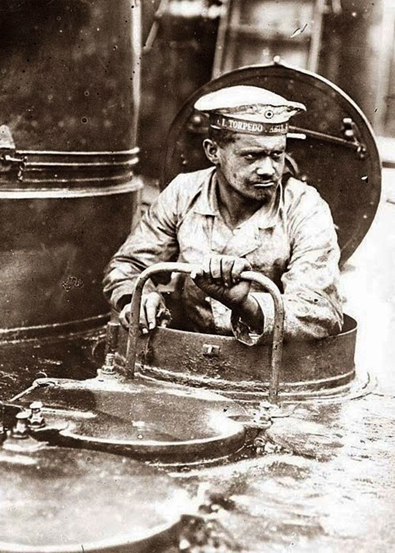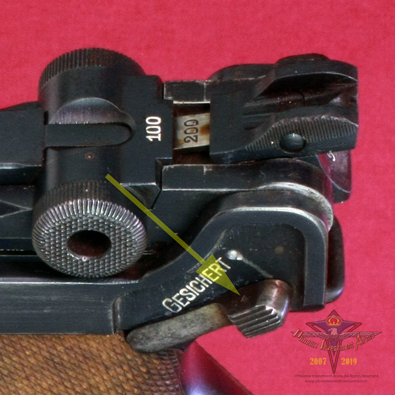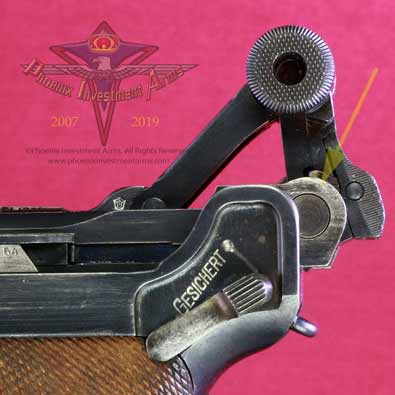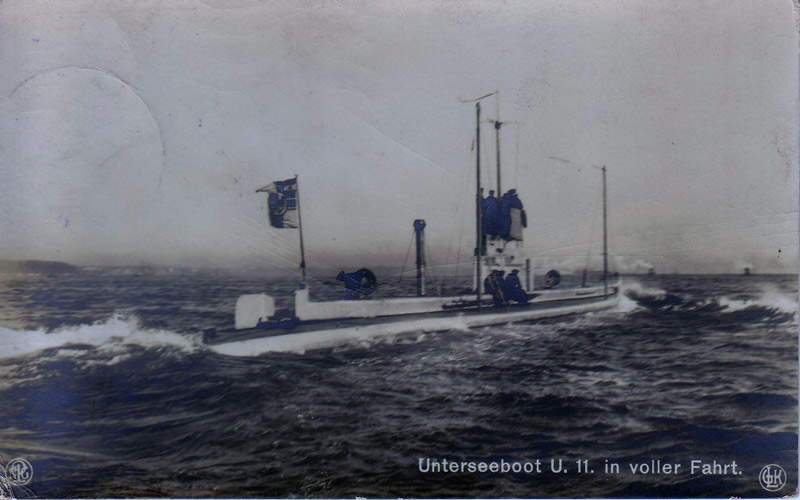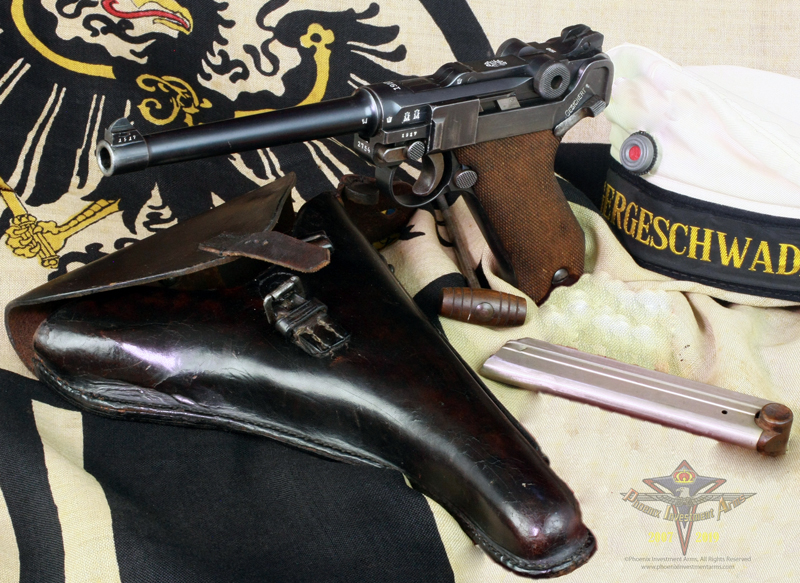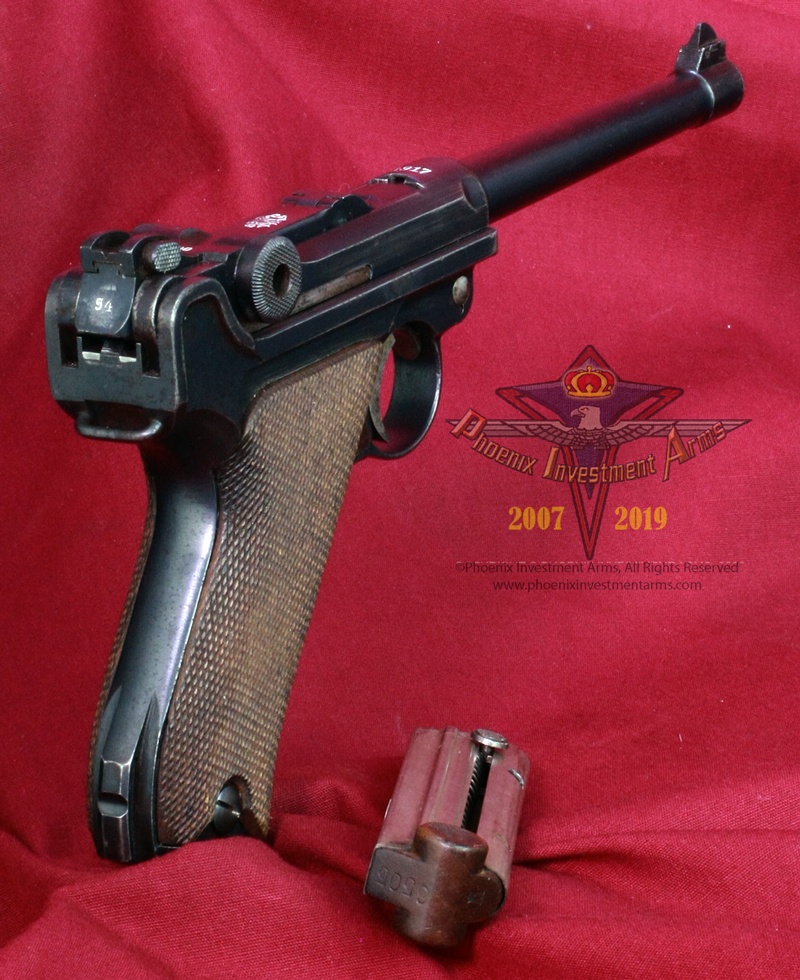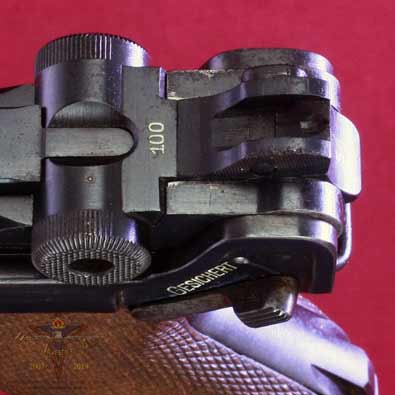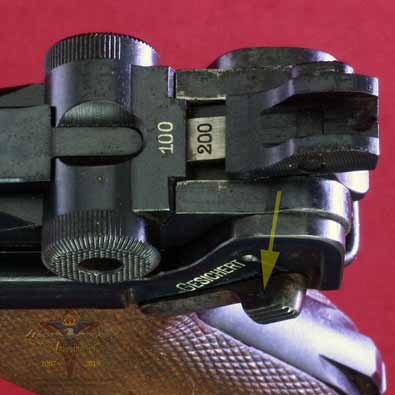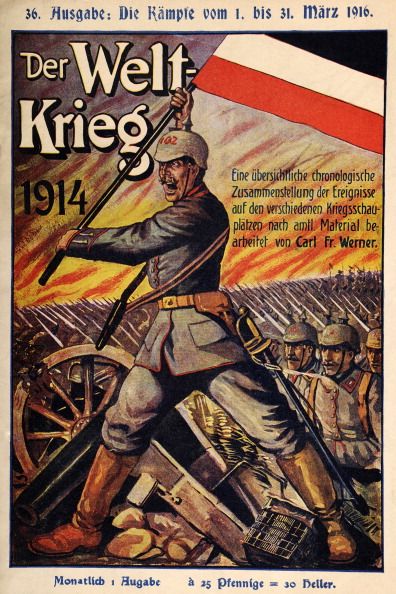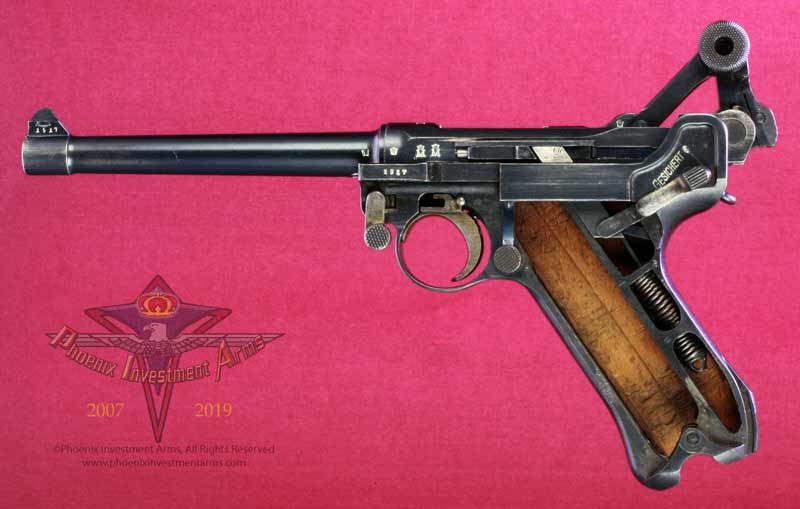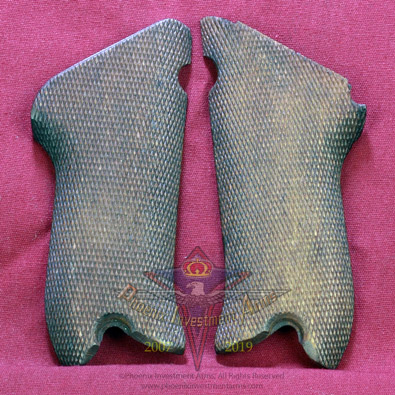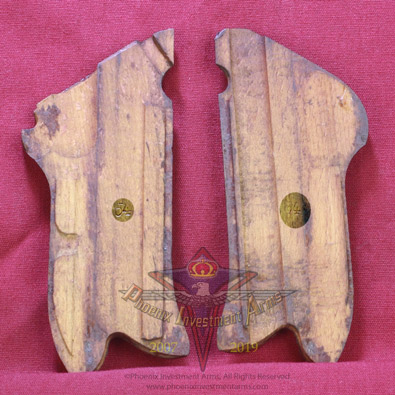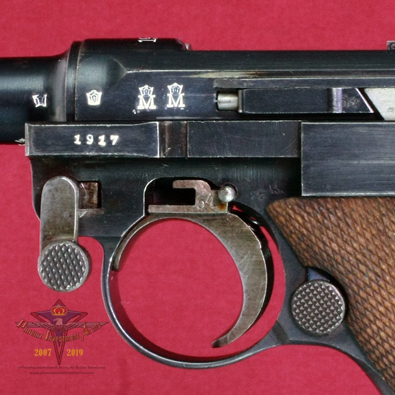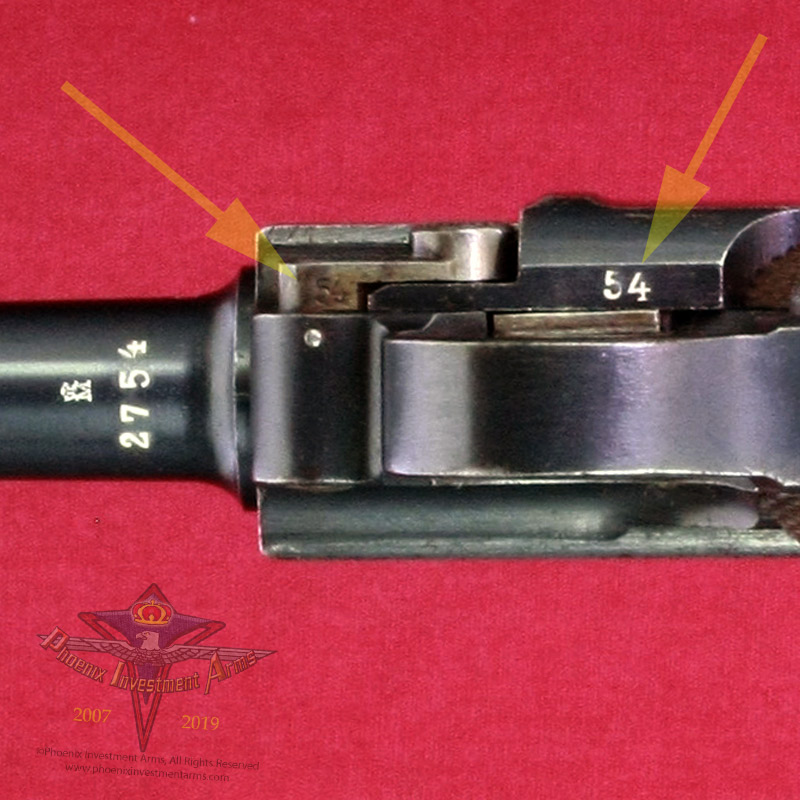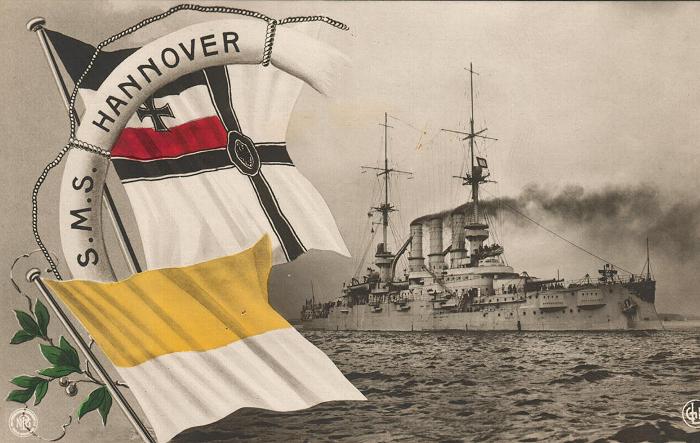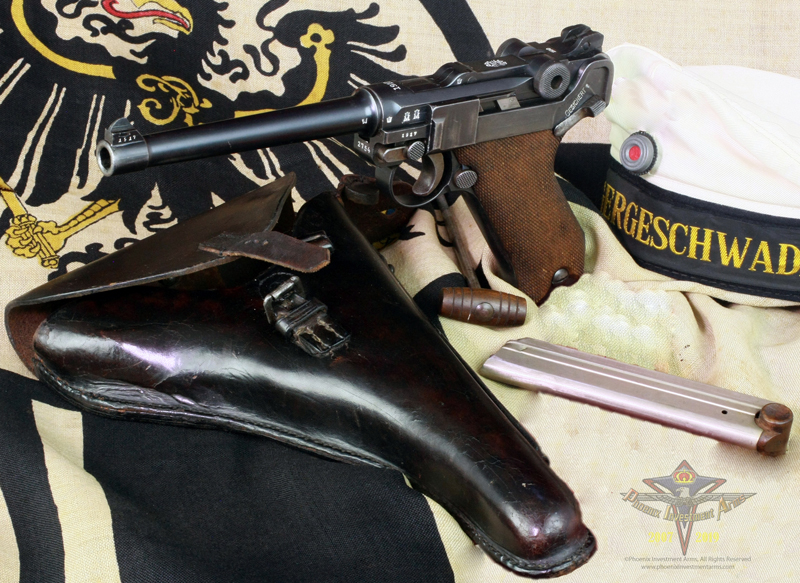PHOENIX INVESTMENT ARMS -
PREMIUM COLLECTOR LUGERS
Genuine German
Luger - Largest Variety of Lugers Offered
Home | Post WWI DWM | Erfurt Lugers | Mauser | Simson Suhl | Krieghoff | Vickers, Ltd | Swiss Bern | Other Guns
Bottom of Page
|
This is a early pistol in the Luger
contract series with the Imperial Navy. Originally designated
the Selbstladepistole Model 1904 by the Navy for the first contract;
this is a 1917 DWM (Deutsche
Waffen und Munitions Fabriken) dated Navy with the original holster, naval cleaning rod and loading tool.
(2045) |
 |
NOTE: Photographs taken today with the high mega-pixel camera show more than we sometimes can see with the human eye. Magnified close-ups show us tool marks and natural surface conditions that one normally doesn't see in the ordinary handling of the weapon. Photographs are copyrighted, all rights reserved, any extraction, reproduction or display of gun pictures without the express consent of the Phoenix Investment Arms is strictly prohibited. Thank you for your cooperation. Please visit Legal (tabbed) for Conditions of Sale. |
